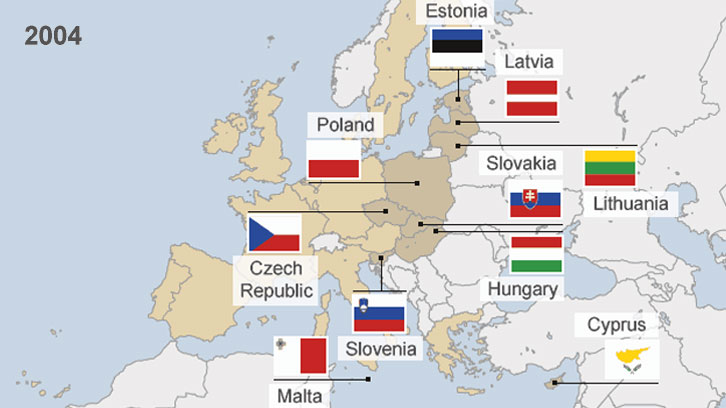Which commercial partners are important for the most recently admitted EU countries?

The EU has experienced one of the most complete integration processes in the world since its creation in 1957. The fifth enlargement in 2004 was the most radical one: it added 10 new member countries to the existing 15 ones. In addition, most of the newcomers were Central and Eastern European Countries (CEECs).
According to the economic literature, a basic integrating process is expected to reinforce the intensity of trade flows among the integrating members. Nevertheless, it was not so obvious in the case of the EU25 the former strong ties between the CEECs and the members of the Former Soviet Union (FSU).
In order to address this issue, we build a database including data about trade flows between the EU10 countries and 180 commercial partners in 6 different sectors over the period 1999-2011. Using an econometric model, we examine variations in the intensity and direction of the EU10’s export and import flows.
We find interesting results. First, trade exchanges between the EU10 and EU15 intensified after 2004. However, the effect was not homogeneous across sectors. The EU10’s export flows referring to goods and products with a high technological content (like machinery and vehicles and other manufactured articles) suffered a reduction. Second, there was a redirection of the EU10’s exports from the FSU to other commercial partners, meaning that the previous economic connections between these two groups deteriorated after 2004. Finally, we identify that the EU10’s consumer demand was strongly biased toward EU10 products.
We put forward two factors that could explain this new evidence that point to a certain degree of weakness associated with the EU integration process. There is certainly a lack of complete trade integration between the EU10 and EU15 countries, either for competitive reasons or consumers’ preferences. From this perspective, it would be interesting to further investigate the reasons behind the above arguments to design and implement policies that are more suitable for achieving a deeper economic and social integration within the EU as a whole. On the one hand, specific sectoral policies could solve the competitiveness issue in some sectors. On the other hand, it would be useful to develop multicultural policies to foster a European identity common to all countries.
References
Gómez-Tello, A. Which commercial partners are important for the most recently admitted EU countries? Economics of Transition. 2015, vol. 23, num. 1, p. 247-292. doi: 10.1111/ecot.12059.


